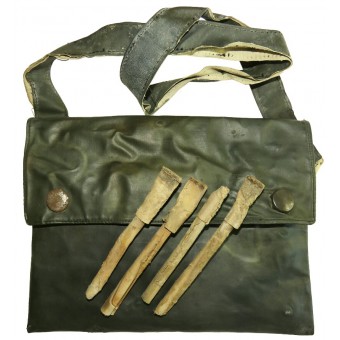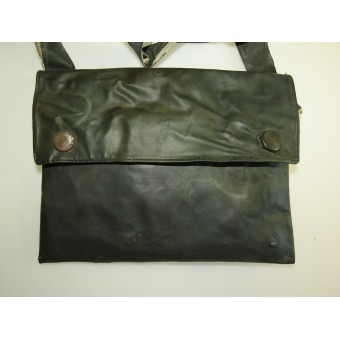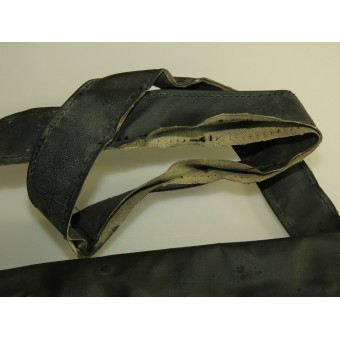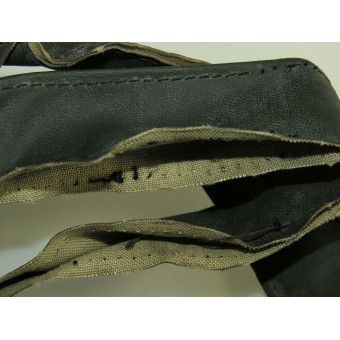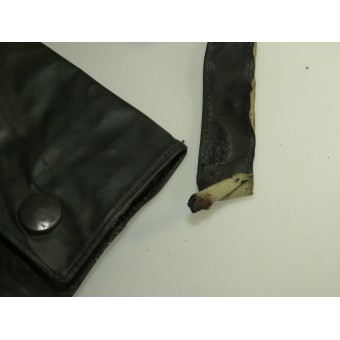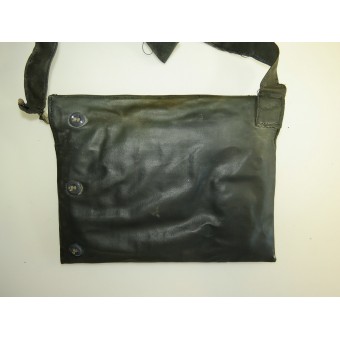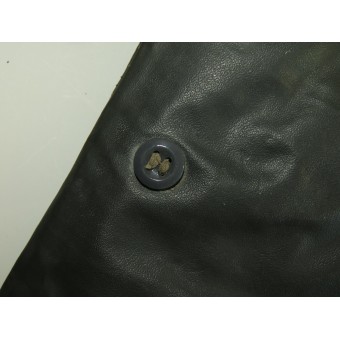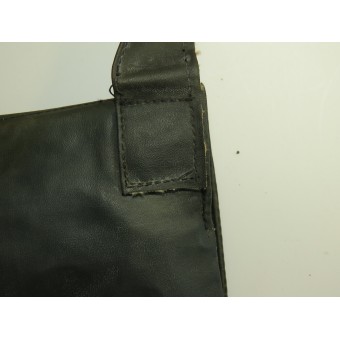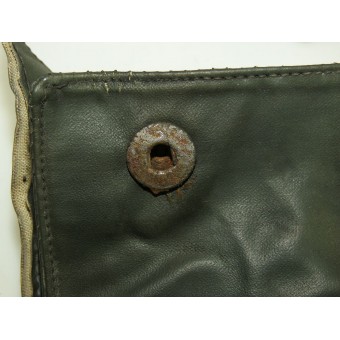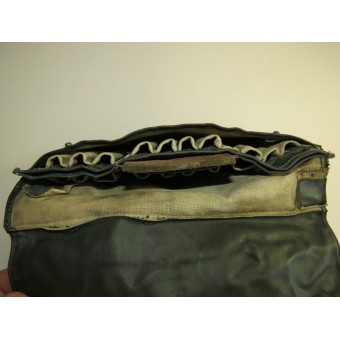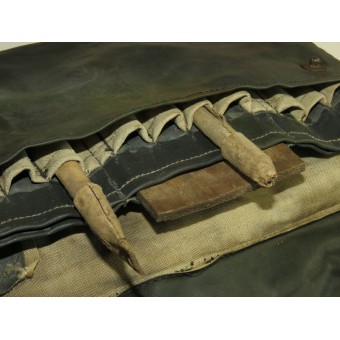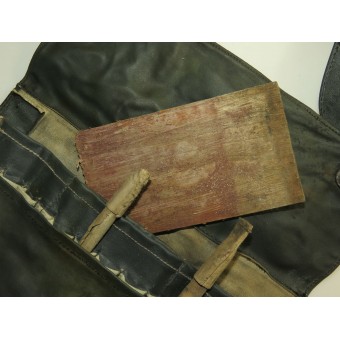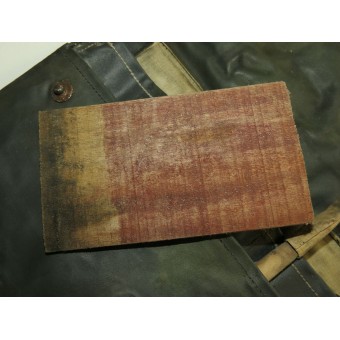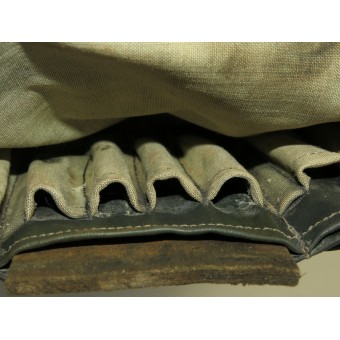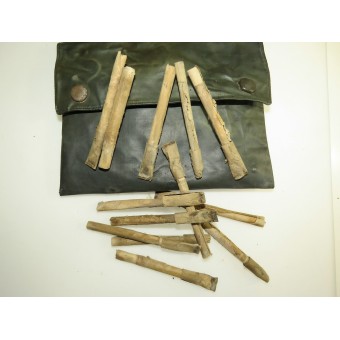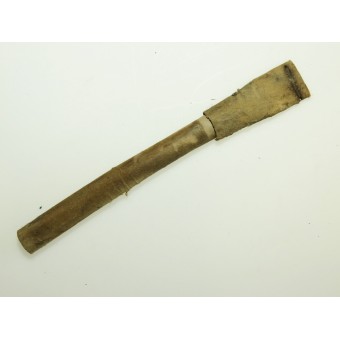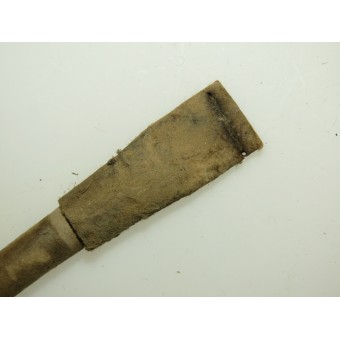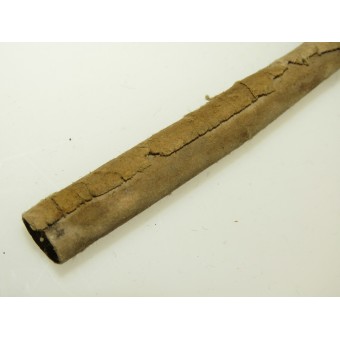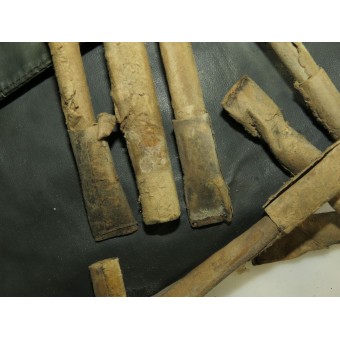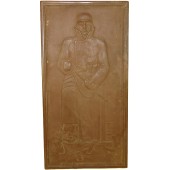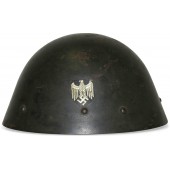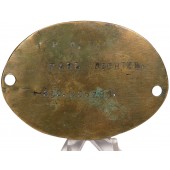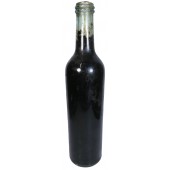German Brandflashen/ Molotov Cocktail igniters bag for Panzerjager. Rare.
German Brandflashen igniters bag for Panzerjager. Just a couple of such bags are known and are extremely rare. The long part of the strap is partially damaged and missed. The bag is made of similar to fire-resistant cloth as used on the protective German Flamethrower uniforms. The bag has been found in the box of 10 Brandflashen grenades in the German bunker near Smolensk and still smells of Creosote. We can say such Molotov cocktails were used in the period winter of 1942–43 years in the Eastern front, as the location is the German positions to such period. This set of igniters is to be fastened to bottle/Brandflasche with Flammöl Nr 19 - Creosote mixed with petrol for the preparation of cocktail Molotov grenades. All the buttons on the bag are functional, and the cloth is pretty well and nice, however, it has been lying under the ground for over 80 years. There are just a couple of ww2 period photos where we can see this scarce bag. Also, the known example is just drawn on the specimen of the German Panzerjager Anti-tank manual in English translation
http://michaelhiske.de/Allierte/USA/GCWM/Part01/Section_J/01J08.htm
The igniters in this set are cardboard tubes, measuring 12 cm long and 9 mm in diameter. The ignition mixture similar to the one used in the sparklers is packed to the length of the paper igniter, beneath the match head and the head of it is the same as the normal match head, which is closed with a cardboard cover and stapled at the upper part. The scratcher supplied, found in the central pocket of the bandolier, is made of plywood and is 12 1/2 cm long, coated with a mixture of red phosphorus on both sides (as on ordinary matchboxes). The pouch itself measures 23,5 x 17,5 cm and contains 20 tubes. Our example contains only 13 survived igniters, which we guess are the only surviving examples in the world.
German Brandflashen igniters bag for Panzerjager. Just a couple of such bags are known and are extremely rare. The long part of the strap is partially damaged and missed. The bag is made of similar to fire-resistant cloth as used on the protective German Flamethrower uniforms. The bag has been found in the box of 10 Brandflashen grenades in the German bunker near Smolensk and still smells of Creosote. We can say such Molotov cocktails were used in the period winter of 1942–43 years in the Eastern front, as the location is the German positions to such period. This set of igniters is to be fastened to bottle/Brandflasche with Flammöl Nr 19 - Creosote mixed with petrol for the preparation of cocktail Molotov grenades. All the buttons on the bag are functional, and the cloth is pretty well and nice, however, it has been lying under the ground for over 80 years. There are just a couple of ww2 period photos where we can see this scarce bag. Also, the known example is just drawn on the specimen of the German Panzerjager Anti-tank manual in English translation
http://michaelhiske.de/Allierte/USA/GCWM/Part01/Section_J/01J08.htm
The igniters in this set are cardboard tubes, measuring 12 cm long and 9 mm in diameter. The ignition mixture similar to the one used in the sparklers is packed to the length of the paper igniter, beneath the match head and the head of it is the same as the normal match head, which is closed with a cardboard cover and stapled at the upper part. The scratcher supplied, found in the central pocket of the bandolier, is made of plywood and is 12 1/2 cm long, coated with a mixture of red phosphorus on both sides (as on ordinary matchboxes). The pouch itself measures 23,5 x 17,5 cm and contains 20 tubes. Our example contains only 13 survived igniters, which we guess are the only surviving examples in the world.


